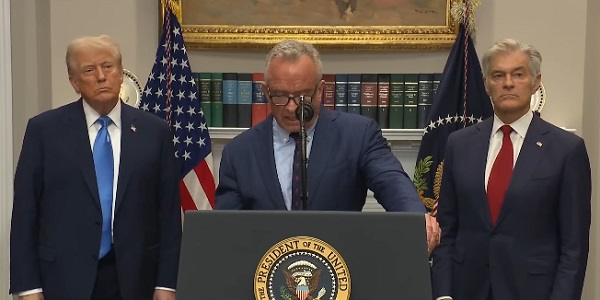Energy
Is the Carney Government Prepared to Negotiate a Fair Deal for the Oil, Gas and Pipeline Sectors
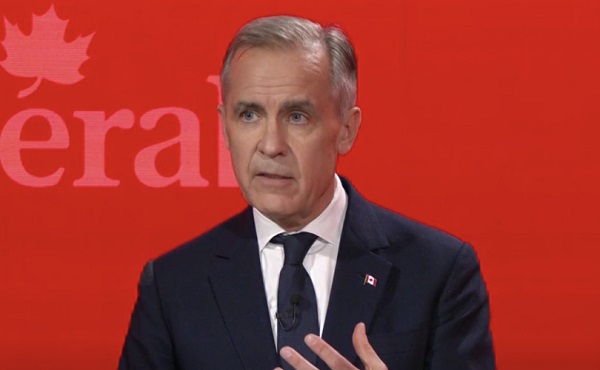
By Jim Warren
Call me a cockeyed optimist but before giving up entirely on the country or selling our energy shares we might want to wait a while to see what a Carney led government actually does.
That being said, lowering the collective blood pressure on the prairies will require answers to some key questions.
Is Mark Carney serious about getting more oil and gas to Canadian tidewater? Does Carney really think this can be done without altering Bill C-69 and ditching the tanker ban, Bill C-48? Is he actually going to leave the emissions cap on oil production, the industrial carbon tax and the clean electricity standard in place, or is he planning to pleasantly surprise us?
Notwithstanding Carney’s penchant for resumé inflation he appears to be a reasonably intelligent guy and a shrewd investor, who understands how national economies work. Assuming this is the case, Carney’s pledge to get more oil and gas exported to customers besides the US may not have been an insincere sop to voters in the West. If so, is he still naïve enough to think pipelines can be built without dismantling the barriers put up by the Trudeau Liberals to block development and stifle growth in the oil and gas sector?
Were his platitudes about zealously protecting the environment and drastically cutting emissions simply an effort to appease the left wing of the Liberals’ electoral base? Will he accept that the radical green agenda outlined in his 600 hundred page door stopper book needs to be put on the back burner during these economically challenging times?
It seems reasonable to imagine Carney was loathe to make too nice with the oil and gas industry prior to the election lest he alienate the Liberal caucus members whose support he needed to win the party’s leadership. Similarly, keeping some of the Liberals’ most radical environmentalists such as Steven Guilbeault out of cabinet could have caused unnecessary embarrassment and friction within the party during the actual election campaign.
Now that he has produced an election win that was nowhere in sight before he became the front runner for the Liberal leadership, Carney is relatively unassailable. True, he can’t be so exceedingly arrogant and dictatorial that he inspires caucus members to cross the floor of the Commons. What is more likely is that those members of the Liberal caucus with the capacity to face reality understand they were headed for political oblivion before Carney came to the rescue. It was he, not them, who secured the victory. They owe him their political lives. This provides Carney with considerable freedom of action when it comes to setting the policy agenda.
He can do some of the things he said he wouldn’t do and refrain from doing others he said he would do. For the Liberals’ communications professionals, explaining why Carney changed his positions from the wrong side of the oil, gas and pipeline debates to the right side should be nowhere near as challenging as the 24/7 turd polishing they had to do for Justin Trudeau.
Yes, the Carney government is currently enjoying its honeymoon period. For a brief while the Liberals get to feel like they are ten feet tall and politically bullet-proof. While his caucus is guzzling champagne and dividing the spoils Carney has the opportunity to plot the policy trajectory of his government.
If Mark Carney really is even half as smart as advertised he knows how important a thriving oil and gas sector (provided with new export pipelines) is to Canada during this time of geopolitical uncertainty and international economic turmoil. Our new prime minister might also appreciate now is not the time to impose inflationary environmental protection and green transition initiatives on the country.
This is not to say Carney ‘deserves a chance’ to show us what he can do. He’s not some sad little fellow whose been warming the bench on a kiddies soccer team hoping for a chance to play. When Mr. Carney entered the game his campaign assured us he is an internationally acclaimed economic wizard capable of running large and important organizations. Now he needs to walk the talk—it’s his job after all.
The point is, there needs to be a long enough pause in East-West political hostilities to see if meaningful cooperation is possible. Should they choose to do so, the producing provinces have the ability to make governing the country much more challenging than it is already. But the prudent approach at the moment is to see what the new prime mister is prepared to negotiate before sending the convoys East. We can still hold the prime minister’s feet to the fire without torching the bargaining table.
This doesn’t mean the country can spend a lot of time making key decisions. The producing provinces and their conventional energy industries have endured a nine year Liberal assault on their ability to generate economic growth. The Trudeau government trampled the rights of the provinces to develop and market their resources. Much has been made of the investment stifling effects of the uncertainty created by the Trump administration’s tariff policies. Nine plus years of uncertainty about the future of Canada’s conventional energy sector has similarly discouraged investment.
There is a wide open policy window available to Canada’s oil, gas and pipeline industries just now. The stars are aligned as well as they’ll ever be for repairing the damage done by the Trudeau Liberals. The strategic importance of being able to market our gas and oil into countries besides the US has never been clearer to Canadians. A majority of people from across the country (74%), including 60% of Quebecers currently favour the building of new oil and gas pipelines extending from the prairies to the east and west coasts.
Yes, at this point in time, the glass is actually more than half full when it comes to making public policy beneficial to the conventional energy sector and the producing provinces. Admittedly, it took a couple of days cooling off after the election results came in for me to say this.
Unfortunately, policy windows don’t stay open forever and the West is urgently seeking change. Federal-provincial negotiations on the conventional energy and pipeline files need to start now. And if the parties are truly concerned about optimizing Canada’s economic prospects and fostering national unity we have every right to expect positive results by mid-summer.
Alberta
Nuclear is the only real way to keep the lights on in Alberta
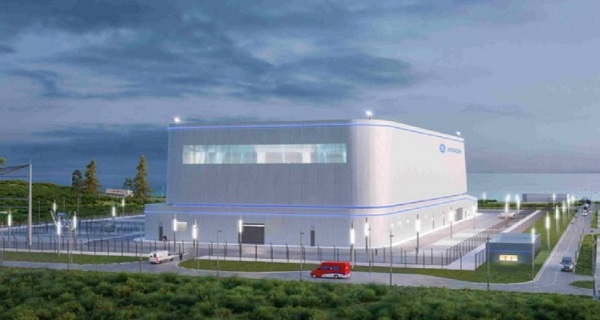
GE-Hitachi small modular nuclear reactor concept
This article supplied by Troy Media.
 By Doug Firby
By Doug Firby
Nuclear power is the best bet for Alberta but time is running out
Alberta needs nuclear power—and fast. While much of the world, including provinces like Ontario, has spent decades building reactors, Alberta remains stuck in neutral, still debating whether the technology is even worth considering.
Affordability and Utilities Minister Nathan Neudorf recently admitted as much.
“We still have an entire legislative and regulatory framework to establish to allow for this novel—as in new—type of generation to happen within the province of Alberta,” Neudorf told the Canadian Press. And now, the province wants to take a full year to gauge public appetite for nuclear power.
Oh my God. Can we not just get on with it?
Here’s the reality. More than a century ago, the province opted for the cheapest form of electricity—coal-fired generation— because Alberta had lots of it. As environmental and health concerns mounted, the province turned to natural gas to fire its generators.
Natural gas is still a fossil fuel—cleaner than coal, but far from perfect. And while renewables like wind and solar don’t have fuel costs, their output isn’t always reliable. That’s why natural gas is still needed to fill the gaps— especially when demand peaks or the wind isn’t blowing. Because it’s often the last generator brought online when renewables fall short, it sets the market price. That’s what drives electricity costs higher—even if most of the power is coming from renewables.
And speaking of renewables, Alberta has smothered a growing industry with strict limitations on where wind and solar farms can operate. According to the Pembina Institute, since October 2023, 11 gigawatts worth of wind, solar and energy storage projects have been withdrawn from the provincial grid operator’s connection queue—more than the province’s average total power demand.
Meanwhile, electricity consumption is expected to soar. The province is chasing $100 billion in data centre investment—facilities that require massive amounts of electricity to run and cool.
So, add it up: Gas-fueled generation is not seen as a good long-term bet, wind and solar has run into a regulatory brick wall, the province’s hydro potential would be hugely expensive (and environmentally complex) to develop, the population of the province has soared past five million and growing, and with the growth in EVs and the rise of more electrical home heating and cooling, we are headed toward the “electrification of everything.”
Why are we taking a year to find out whether Albertans support nuclear power? And what happens if they say no?
Now let’s also face some facts about nuclear. It’s a highly regulated industry—and rightly so— and even then, it has had its share of safety incidents. Chernobyl. Fukushima. Three Mile Island. Because of that, it can take years to move from proposals to construction. And with regulations constantly evolving, the cost of building nuclear plants often exceeds initial estimates.
Ontario’s experience is a cautionary tale. Over two decades, as Ontario Hydro built 20 reactors, it faced repeated cost overruns, missed deadlines and declining performance. By 1999, Ontario Hydro’s debt stood at $38.1 billion. Its assets? Just $17.2 billion. The government was left with a $20.9 billion stranded debt.
Thankfully, with thoughtful execution, Alberta could avoid many of the teething problems Ontario encountered as it nurtured then-nascent nuclear technology. For one, Premier Danielle Smith is rightly seeking proposals from the private sector and will only consider establishing a Crown corporation if private proposals don’t meet the province’s needs. Private sector investment drove the explosive growth in renewables (until the province brought it to a halt with new restrictions); potentially, the same could be true for nuclear.
Alberta can also benefit from decades of global experience with nuclear power. There’s no need to reinvent the wheel. Among the more promising developments are SMRs—small modular reactors. These typically produce 300 megawatts or less and can be factory-built, then transported to site. Like prefabricated homes, they offer streamlined construction, better scalability and the ability to be integrated into multi-unit facilities as demand grows.
This could be especially valuable if Alberta succeeds in attracting those power-hungry data centres.
Cost isn’t the only consideration. Water use and nuclear waste transport must also be managed carefully. But there are compelling reasons to pursue nuclear—and to lift the restrictions on renewables while we’re at it. Not the least of these is its zero emissions.
Now, we need to get going. In the most optimistic forecasts, the first nuclear reactor is at least a decade away. By then, our demands for electricity will have grown substantially, barring some sort of unforeseen breakthrough in efficiency.
You don’t have to love nuclear power. You just have to recognize the truth: Alberta needs to prepare for it now.
Doug Firby is an award-winning editorial writer with over four decades of experience working for newspapers, magazines and online publications in Ontario and western Canada. Previously, he served as Editorial Page Editor at the Calgary Herald.
Troy Media empowers Canadian community news outlets by providing independent, insightful analysis and commentary. Our mission is to support local media in helping Canadians stay informed and engaged by delivering reliable content that strengthens community connections and deepens understanding across the country.
Economy
Oil prices fall under pressure as global supply surges
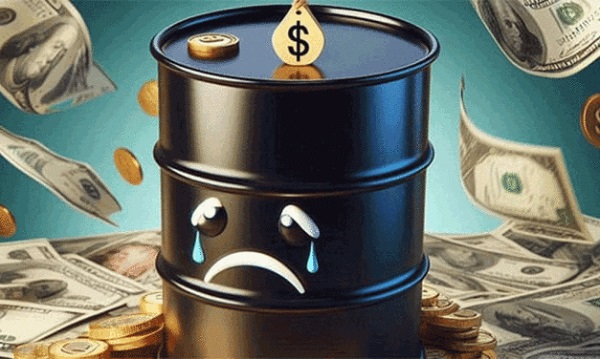
This article supplied by Troy Media.
OPEC output, weak demand and global politics are flooding the market. Experts warn an oil supply glut could hit by 2026
Global oil markets are bracing for a long-term downturn, driven by rising supply, softening demand and mounting economic headwinds.
Brent crude closed Friday at US$66.68 per barrel, down 76 cents or 1.1 per cent. West Texas Intermediate dropped 89 cents to US$62.68, a 1.4
per cent decline. While markets initially hoped an interest rate cut by the U.S. Federal Reserve might boost consumption, oversupply concerns have taken the wheel.
The International Energy Agency now projects a market surplus of 3.3 million barrels per day (bpd) by 2026 if current policies remain in place. Global supply is expected to rise by 2.7 million bpd in 2025 and another 2.1 million in 2026, while demand will grow by just 700,000 bpd annually.
The U.S. Energy Information Administration echoes the concern. Its latest ShortTerm Energy Outlook forecasts global petroleum and other liquid fuels production to average 105.5 million bpd in 2025, climbing to 106.6 million bpd in 2026. Consumption will lag at 103.8 million and 105.1 million bpd, respectively.
Adding to the unease, U.S. distillate stockpiles—diesel, jet fuel and other products held in storage— unexpectedly rose by four million barrels,
suggesting that more fuel is going unused and demand is starting to stall.
Beyond market fundamentals, some of the bearish pressure is also political. OPEC, the Organization of the Petroleum Exporting Countries, is increasing production—partly shielded by U.S. President Donald Trump’s push for lower domestic fuel prices, a priority that influences how much pressure Washington applies to oil-producing nations.
The White House has made clear it wants energy affordability, giving oil producers the political cover to keep pumping without fear of retaliation.
Geopolitical dynamics are compounding the supply picture. A recent thaw in U.S.–China relations reduced the likelihood of secondary sanctions over Chinese imports of Russian crude. Trump and Chinese President Xi Jinping are expected to meet at the upcoming Asia-Pacific Economic Cooperation summit at the end of October.
Markets took comfort in Trump’s silence on Chinese oil purchases, seeing it as a signal that confrontation is off the table, at least for now.
India continues to buy Russian oil, and the European Union’s latest sanctions package lacks the strength to provoke a firmer U.S. response. Together, these factors are helping keep Russian barrels in global circulation.
Elsewhere, Iraq appears close to resuming crude exports from its Kurdistan region to Turkey, adding yet another stream of supply to an already saturated market.
On top of all this, the upcoming refinery turnaround season—a routine drop in crude demand as refineries shut down for maintenance—will temporarily reduce consumption even further.
In short, all the major levers are pulling in the same direction: lower prices.
And while that may seem like good news for consumers, the ripple effects are far more serious. Canadians may welcome cheaper gas in the near term, but the implications go far beyond the pump.
A prolonged downturn could hit investment in Alberta’s oil sands, Newfoundland and Labrador’s offshore sector, and Saskatchewan’s oil-producing regions—each of them key drivers of provincial revenue and the Canadian economy. Lower prices mean reduced royalties, which fund everything from health care to infrastructure.
Non-renewable resource revenues—primarily from oil and gas—remain a significant source of income for these provinces. In Alberta, they are forecast to account for roughly 21.5 per cent of total government revenue in 2025–26. In Newfoundland and Labrador, oil royalties alone are projected to contribute about 15 per cent of the province’s revenue. Even in Saskatchewan, where potash and uranium also play a role, oil and gas revenues make up a substantial share of the 12.8 per cent of income tied to non-renewable resources.
These figures underscore just how exposed provincial finances remain to global oil price movements.
That pullback in investment could also slow hiring and capital spending, with ripple effects across energy-dependent regions. Pension funds and institutional investors with heavy exposure to oil and gas may feel the sting as well.
At the national level, the consequences could be far-reaching. Canada’s oil and gas extraction sector alone accounts for about 3.2 per cent of GDP, according to the Canadian Association of Petroleum Producers. Broader estimates that include investment, supply chains and related industries place the sector’s total contribution at around 6.4 per cent, based on previous Canadian Energy Centre analysis.
Lower crude prices tend to weaken the Canadian dollar, slow investment in big projects, and cut into export earnings. That can drag down GDP growth, shrink government revenues, and affect job markets even outside the oil patch.
In a country where energy exports still drive much of the economy, a prolonged slump could have wide-reaching fiscal and economic consequences.
Investors, governments and energy workers alike should brace for impact—the oil market isn’t just cooling, it’s being flooded.
Toronto-based Rashid Husain Syed is a highly regarded analyst specializing in energy and politics, particularly in the Middle East. In addition to his contributions to local and international newspapers, Rashid frequently lends his expertise as a speaker at global conferences. Organizations such as the Department of Energy in Washington and the International Energy Agency in Paris have sought his insights on global energy matters.
Troy Media empowers Canadian community news outlets by providing independent, insightful analysis and commentary. Our mission is to support local media in helping Canadians stay informed and engaged by delivering reliable content that strengthens community connections and deepens understanding across the country
-

 Business16 hours ago
Business16 hours agoOver $2B California Solar Plant Built To Last, Now Closing Over Inefficiency
-

 espionage2 days ago
espionage2 days agoCanada Under Siege: Sparking a National Dialogue on Security and Corruption
-

 Business15 hours ago
Business15 hours agoWEF has a plan to overhaul the global financial system by monetizing nature
-
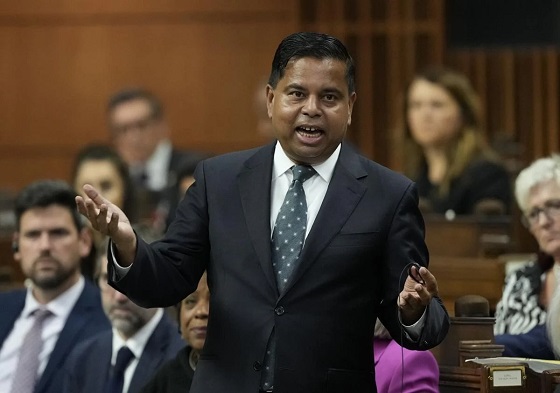
 Business17 hours ago
Business17 hours agoThe Leaked Conversation at the heart of the federal Gun Buyback Boondoggle
-
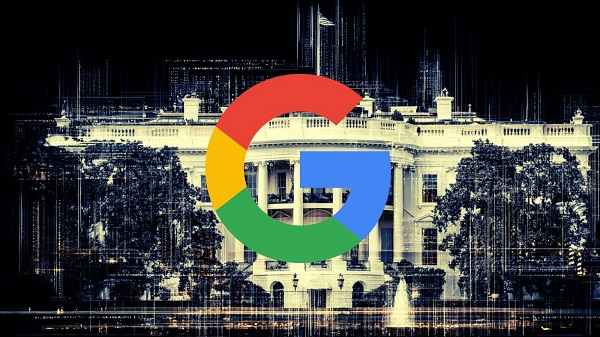
 Business2 days ago
Business2 days agoGoogle Admits Biden White House Pressured Content Removal, Promises to Restore Banned YouTube Accounts
-

 Opinion16 hours ago
Opinion16 hours agoThe City of Red Deer’s financial mess – KPMG report outlines failure of council to control spending
-

 International2 days ago
International2 days agoTrump says he won’t back down on Antifa terrorism designation
-
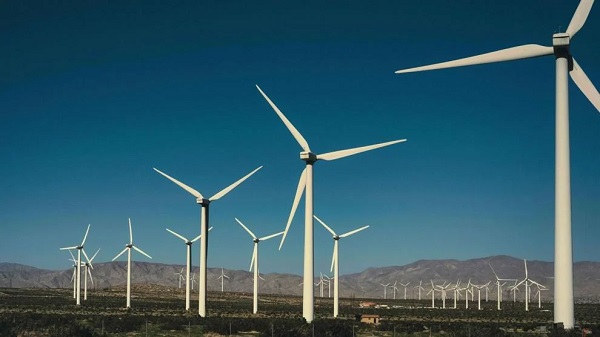
 Business2 days ago
Business2 days agoDepartment of Energy returning $13B climate agenda funding to taxpayers





